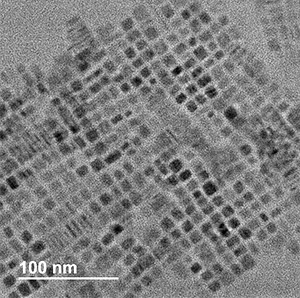
Image Credit: Universitat Politècnica de València.
A team of researchers from the Universitat Rovira i Virgili, together with the Instituto de Tecnología Química (ITQ), joint researcher center of the Universitat Politècnica de València (UPV), and the Spanish National Research Council (CSIC), has developed a nanosensor that can detect very low quantity of nitrogen dioxide in the air.
Moreover, it enhances the sensitivity and reliability of currently used sensors by 300%. The study, which was reported in the Sensors journal, is a step toward developing devices of this type that are made of carbon nanomaterials.
Under the guidance of Juan Casanova and Eduard Llobet, researchers from the Departamento de Ingeniería Electrónica, Eléctrica y Automática at the URV, studied two materials. Initially, they worked with graphene, a highly hydrophobic (moisture- and water-resistant) material that is very sensitive in gas detection, but with certain drawbacks—its sensitivity degrades over time and it is not so selective.
Then, they worked with perovskites, materials with a crystalline structure and commonly used in solar cells. But these materials degrade rapidly upon exposure to the atmosphere. Therefore, the researchers resorted to integrate perovskites with a hydrophobic material that can repel water molecules (for example, graphene) to demonstrate that the degradation of the material can be prevented or slowed down.
This graphene and perovskites hybrid resulted in a material that can more sensitively detect these kinds of gas. Perovskite alone eventually deteriorates and we have proved that when we put it on top of graphene, their properties and the sensor response remain stable longer.
Eduard Llobet, Departamento de Ingeniería Electrónica, Eléctrica y Automática, Universitat Rovira i Virgili
Carbon Nanomaterials Sensors, a Promising Future
For many years, scientists have been looking for alternatives to traditional sensors, and carbon nanomaterials provide potential results in this respect. Apart from their small size and low energy needs for operation, it has been established that these materials exhibit good responses and fast recovery at room temperature, in contrast to existing sensors.
They are portable devices due to their size—they can be even wearable. Work at room temperature is very important because they need very small batteries, an unthinkable feature with other materials.
Eduard Llobet, Departamento de Ingeniería Electrónica, Eléctrica y Automática, Universitat Rovira i Virgili
For the first time, in this study, graphene with perovskite nanocrystals was used as a toxic gas sensor, and it has been established that this combination is a better alternative to sense these compounds, thanks to its high sensitivity over time. The study findings have made perovskites an alternative to metals, polymers, metal oxides, and other molecules often used to alter the surfaces of carbon nanomaterials like graphene.
For several years, researchers at ITQ have focused on the production and application of perovskites in areas like photocatalysts and solar cells. But their application as sensors is very new. The ITQ team controlled the size and composition of nanocrystals to render them highly sensitive to nitrogen dioxide.
These materials present a high potential to develop new gas sensors, because here we take advantage of a limitation in the field of solar cells: ‘defects’ that in the case of sensors play a significant role in the functioning mechanism. In addition, taking into account all the structural modification possibilities of perovskites, we have the opportunity to find a large family of sensors to detect other gases.
Pedro Atienzar, CSIC Scientist, Instituto de Tecnología Química
Atienzar continued, “Also, it is important to note that perovskites are easy to synthesize and they use abundant elements in nature.”